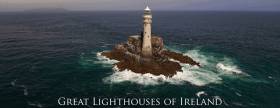Displaying items by tag: RTE 1
When you see the projects which have been featuring on the Big DIY Challenge sponsored by Ronseal and hosted by comedian and Dun Laoghaire lifeboat crewman P J Gallagher on RTE 1 every Thursday at 8.30 pm, you'll have marvelled at how much the competitors can achieve within the pressures imposed by the crazy contest's ten days time limit. But it's unlikely you'll have thought that anything but the smallest boat modification could have been fitted into the Challenge's strict time restrictions and other rules.
 Erisky up against it. Though she looked relatively unscathed after breaking her moorings and coming ashore at Contarf Baths in the Autumn of 2019, Erisky had broken off one of her twin keels, and she was a complete mess inside.
Erisky up against it. Though she looked relatively unscathed after breaking her moorings and coming ashore at Contarf Baths in the Autumn of 2019, Erisky had broken off one of her twin keels, and she was a complete mess inside.
 The Sailing Family Smyth – Trevor and Krissi Smyth and their kids with his mother Bridget and the vintage IDRA 14 Chloe
The Sailing Family Smyth – Trevor and Krissi Smyth and their kids with his mother Bridget and the vintage IDRA 14 Chloe
Yet the Smyth sailing family of Clontarf – well known for their successes in dinghies and cruiser-racers – thought otherwise. For they'd already brought the very tired IDRA 14, Chloe of 1969 vintage, back to life as a lockdown project, which taught them how much could be achieved with a focused approach. And now Trevor and Krissi Smyth and their friend Orla Doogue were looking thoughtfully at the 50-year-old 26ft Westerly Centaur Erisky (named for the Scottish Hebridean island which had inspired the film Whisky Galore), for Erisky was a formidable yet fascinating restoration project.
 Before the saloon could be restored, it had to be completely cleared and cleaned, and the smell of diesel eliminated
Before the saloon could be restored, it had to be completely cleared and cleaned, and the smell of diesel eliminated
 It's getting late, it's getting dark, and it's getting cold, but the core team of Trev, Orla and Krissi have just completed a massive evening's work.
It's getting late, it's getting dark, and it's getting cold, but the core team of Trev, Orla and Krissi have just completed a massive evening's work.
The classic twin-keeler had come ashore at Clontarf Baths after breaking her moorings in a late season south-easterly storm, and though she looked superficially okay with her hull largely intact, one of her twin keels had been broken off, and the mess within the hull was everywhere, with the suffocating smell of diesel in every nook and cranny.
 When they started, the forecabin was a smelly hellhole, but this is how it was after the ten day DIY Challenge
When they started, the forecabin was a smelly hellhole, but this is how it was after the ten day DIY Challenge
 Before the project, Erisky's 50-year-old cockpit was looking distinctly tired, but it too was brought back to life
Before the project, Erisky's 50-year-old cockpit was looking distinctly tired, but it too was brought back to life
It was a job that could have gone on for an entire winter, but who wants to spend every winter weekend reeking of diesel and dirt? It was then that the Ronseal Challenge was publicized, and this was both the spur to action and the framework for some very concentrated pre-planning and definition of daily objectives, not least of the problems being that everyone was so keen on getting it completed that "labour optimisation" – preventing people getting in each other's way as the work rapidly progressed – was a continuous necessity.
 The dream fulfilled - Erisky on her first sail in 2021
The dream fulfilled - Erisky on her first sail in 2021
Well, they did it – Erisky is looking better than ever, and this past sunny weekend, she was out and about family cruising. But if you still wonder at just how it could all be done in only ten days flat, the Ronseal Big DIY Challenge will show you on RTE 1 this Thursday (June 3rd at 8.30 pm).
#Lighthouses - Irish Lights has announced its involvement in a four-part documentary series with RTE 1 that tells the story of Ireland’s lighthouses and the associated aids to navigation network around the island of Ireland and the vital role it plays in ensuring safety at sea for all.
The documentary, Great Lighthouses of Ireland, illustrates Irish Lights’ leading role in safe navigation at sea from the 1800s to the present day, and the advances that have taken place in relation to Aids to Navigation from an engineering and technology perspective during this period. The documentary pays tribute to Irish Lights’ heritage and the people behind the lighthouse service, and the pivotal role they played in the history and life around the coast over generations.
The documentary series began on RTE 1 last Sunday 30th September at 6.30pm and will continue for the next three consecutive weeks.
Afloat adds that the first episode can be viewed on RTE 's i-Player through this link.
Speaking about the documentary, Yvonne Shields O’Connor, Chief Executive, Irish Lights said, “Irish Lights is delighted to collaborate with RTE on this documentary which showcases the previously untold stories of lighthouses in Ireland, their keepers and the vital role they have played in maritime safety in this country over the past 200 years. It is a wonderful testament to our organisation's rich heritage and the dedicated people who have supported Irish Lights in its mission to ensure safe navigation at sea. Today Irish Lights continues to be at the forefront of maritime safety, using advances in technology and engineering to deliver reliable and wide-ranging services to support a diverse and important maritime industry around the coast north and south.”
The first episode aired last week and showed the important role of Ireland’s lighthouses in providing safe navigation at sea. As an island nation, almost everything we consume, from food to electronics, fuel and vehicles, arrives by sea. The visual and electronic Aids to Navigation operated by Irish Lights support the safe passage of ships around our often-dangerous coastal waters, and viewers will see glimpses of what life was like for lighthouse keepers and their families in earlier periods.
The second episode will uncover how Ireland became a world-leader in lighthouse engineering. Often working in hostile and treacherous natural locations, Ireland’s lighthouse engineers and builders used incredible ingenuity to achieve what seemed impossible.
The third episode explores Ireland’s forgotten naval history, and the surprising roles that lighthouse keepers played in both the First and Second World Wars. The final episode will focus on the transition to the automation of lighthouses, and it will show how Irish Lights is at the forefront of modern technology, from advances in lighthouse lighting to sophisticated buoys that tweet information to mariners.
With over 340 General Aids to Navigation in the form of lighthouses, buoys, beacons, electronic Aids to Navigation and a range of digital services, the Irish Lights operational network constitutes a critical coastal infrastructure for the safety of all at sea and our coastal communities. In addition to profiling the important work of ILV Granuaile, this episode will highlight the work Irish Lights does to protect and develop its heritage assets for the benefit of the Irish public through the hugely successful Great Lighthouses of Ireland North-South tourism and heritage initiative.
Combating Piracy off the Seychelles
#ON THE TV – In tomorrow's concluding two-part documentary 'Hostile Environment' (RTE 1, 21.35) actor Liam Cunningham explores the criminal world in the Seychelles. Also examined is the role of anti-piracy work, as almost one third of all the oil in the world passes through the Indian Ocean.
Cunningham highlights how the country is combating crime, and where Irish private security contractors have had an impact on turning around crime rates.
Former intelligence officers Declan Barber and Niall Scully were first brought to the island when the Seychelles government suspected sensitive information was being leaked.
This led to Barber and Scully recruiting former army ranger Seamus Griffin to set up and train the Tazar Unit, the Seychelles Anti-Terrorist Unit.
To date the unit has successfully stopped five pirate attempts, resulting in the release of 35 hostages and the capture of 63 pirates.






























































